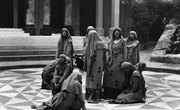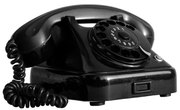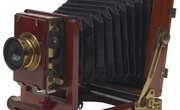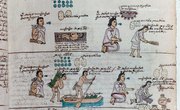Movie directors and producers attempted to add sound to films in the 1890s. Usually this was just some music at the beginning, or an occasional sound effect here and there. Most attempts ended in failure because the sounds didn't match up with the action. In the late 1920s, technology finally made it possible for sound and action to blend seamlessly. Alan Crosland is credited with making the first successful "talking movie."
Silent Films
Films were popular in the 1920s, but not as popular as other forms of entertainment, primarily because they had no soundtracks, according to the University of Virginia's Department of American Studies. Theater owners tried to remedy this by hiring live orchestras to sit in the theaters and provide music, but it wasn't until Western Electric created the Vitaphone sound system -- which allowed sounds to be recorded onto wax disks -- that complete soundtracks were fully integrated into movies. The soundtracks were recorded onto the disks, which were played as the film was projected onto the screen. The fact that the projector and Vitaphone system used the same motor made it possible for the soundtrack to be synchronized with the film. At first, only music and sound effects were recorded. Later, spoken dialogue was added.
A Visionary Director
When the Warner Brothers set out to showcase their first film using Vitaphone technology, they needed a director that could handle the unexpected curve balls that might arise during the process. So, they chose Alan Crosland, who was known for his ability to get along with just about everyone, including temperamental actors and skeptical investors. Although Warner Brothers was considered a "has-been" studio at the time, Crosland agreed to take on the challenge of making the first motion picture with fully integrated sound.
The First Talking Picture
The first motion picture with a synchronized soundtrack was titled "Don Juan." Released in 1926, it was directed by Alan Crosland. The movie was produced specifically to show off the Vitaphone sound system. "Don Juan" featured a synchronized musical score and sound effects -- but no spoken dialogue -- and was hailed as a moderate success. Still, theater owners and many movie producers were not convinced that audiences wanted to see pictures that included recorded sounds.
A Film Revolution
"The Jazz Singer" was Warner Brother's second movie created with the Vitaphone sound system, and it was a huge success. This was fortunate for Warner Brothers, as they had put all of their remaining resources into the film. Alan Crosland was again tapped to direct the film, and this time, something new was added to the soundtrack -- spoken dialogue. The film was a "partial talkie" in that it only contained about 281 spoken words, according to IMDb. Still, audiences loved it, and the movie earned over 3 million dollars -- a huge sum at the time. As a result, Crosland became quickly known as the most experienced sound director in Hollywood.











